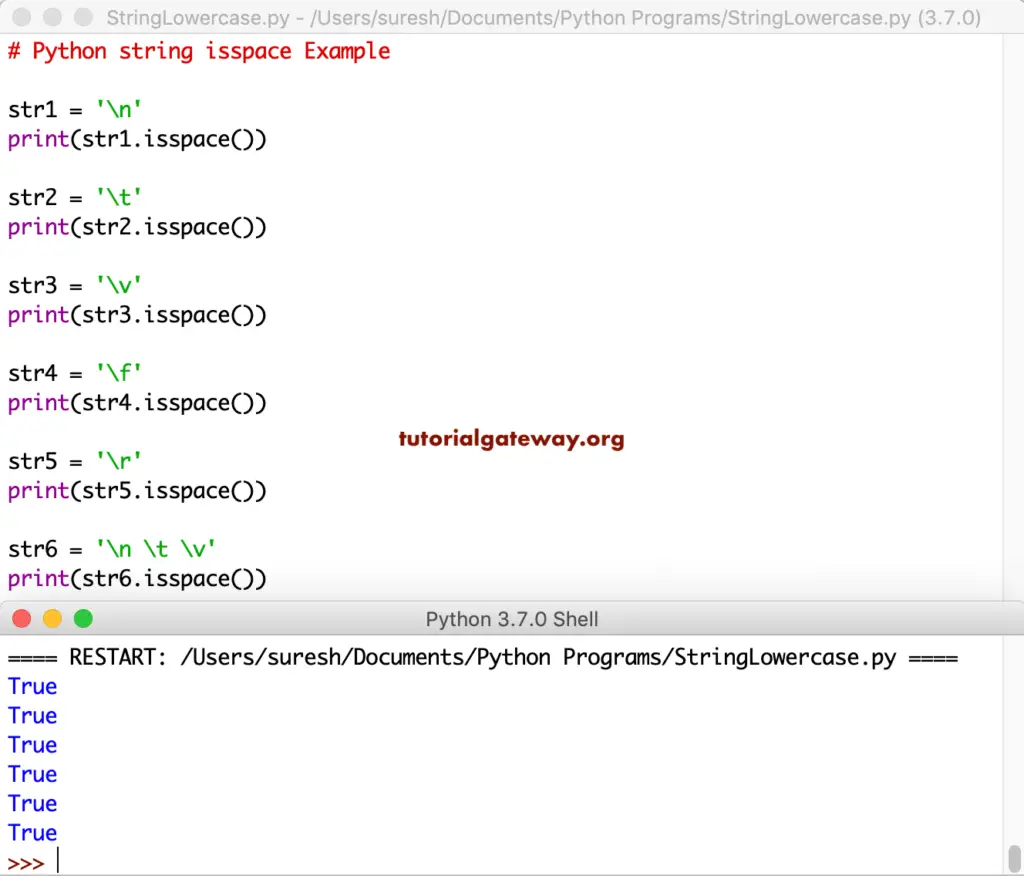The Python isspace function returns True if all the characters in a given string are whitespace characters. Otherwise, it returns False, and the syntax of this is
String_Value.isspace()
The Python isspace function whitespace characters
- ‘ ‘ – An empty space
- \n – New Line
- \t – Horizontal Tab
- \v – Vertical Tab
- \f – feed
- \r – Carriage return
Python isspace String Example
This example shows how to find or check spaces in a string using this isspace function. The first string is empty, but there is no empty space. The second statement has an empty space. We used a word with a combination of spaces within the third statement.
As you know, this Python method returns True only if all the characters are empty spaces. That’s why you see the False as the output.
str1 = '' print(str1.isspace()) str2 = ' ' print(str2.isspace()) str3 = ' Python ' print(str3.isspace())
False
True
FalseIn this example, we use the Python isspace function against the Newline, horizontal tab, etc. These statements always return True.
However, if you use them along with text, then the method returns false.
str1 = '\n' print(str1.isspace()) str2 = '\t' print(str2.isspace()) str3 = '\v' print(str3.isspace()) str4 = '\f' print(str4.isspace()) str5 = '\r' print(str5.isspace()) str6 = '\n \t \v' print(str6.isspace())

